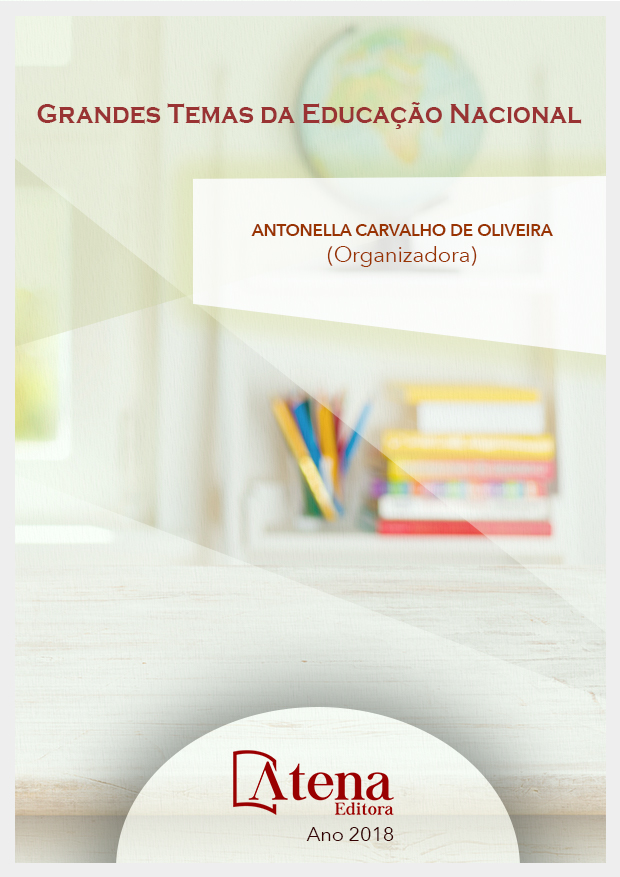
A CONTRIBUIÇÃO DA CONTAÇÃO DE HISTÓRIAS EM TURMA DE PRIMEIRO ANO DO ENSINO FUNDAMENTAL
Antigamente a contação de histórias
era utilizada como forma transmitir a cultura,
com intuito de não se apagar com o passar
dos tempos, possibilitando a ressignificação
de vivências. Através da contação de histórias,
o ouvinte pode experimentar sentimentos
variados causados pelo imaginário do que se
está ouvindo. O público infantil, podem vivenciar
sentimentos, desfrutando da oportunidade de
explorar o que está sendo contado, apreciando
o momento de ludicidade e magia. A contação
de histórias no âmbito educacional pode ser um
aliado ao professor para ajudar no processo
de ensino/aprendizado de seus alunos e
conduzindo sua turma a criar, imaginar,
promover o desenvolvimento intelectual, social,
pois visa à comunicação com o outro e o
progresso integral. Diante de tais pressupostos,
buscou-se investigar a contribuição da contação
de histórias para o desenvolvimento de crianças
de turma de primeiro ano, com idades entre
5 e 6 anos. Em relação à literatura infantil,
contação de histórias e o desenvolvimento da
criança de três a sete anos buscaram-se como
respaldo teórico os autores: Abramovich (1995),
Bettelheim (1992); Carvalho (1989); Deldime;
Vermeulen (1999), Radino (2003), Sisto (2005),
Tahan (1974) Zilberman (1991). Trata-se de uma
pesquisa qualitativa, com a ação dentro de sala
de aula, através de contação de histórias para
turma de primeiro ano do ensino fundamental.
Diante dos resultados, pode-se verificar que a
contação de histórias se mostrou importante,
pois auxilia o aluno em seu aprendizado, no
desenvolvimento intelectual, emocional, social,
entre outros
A CONTRIBUIÇÃO DA CONTAÇÃO DE HISTÓRIAS EM TURMA DE PRIMEIRO ANO DO ENSINO FUNDAMENTAL
-
DOI: Atena
-
Palavras-chave: Contação de histórias. Aprendizagem. Ludicidade. Criatividade.
-
Keywords: Storytelling. Learning. Playfulness. Creativity.
-
Abstract:
In the past, storytelling was used
as a way to transmit culture, in order not to
fade with the passing of time, making possible
the resignification of experiences. Through
storytelling, the listener may experience varying
feelings caused by the imagery of what is being
heard. The children’s audience can experience
feelings, enjoying the opportunity to explore what
is being told, enjoying the moment of playfulness
and magic. Storytelling in the educational
setting can be an ally to the teacher to assist in
the teaching / learning process of their students
and lead their class to create, imagine, promote
intellectual and social development as it aims
at communicating with others and progress
integral. In view of such assumptions, we sought to investigate the contribution of storytelling to the development of first-grade children
aged 5 to 6 years. In relation to children’s literature, storytelling and the development
of the child from three to seven years, the following authors were used as theoretical
support: Abramovich (1995), Bettelheim (1992); Carvalho (1989); Deldime; Vermeulen
(1999), Radino (2003), Sisto (2005), Tahan (1974) Zilberman (1991). It is a qualitative
research, with the action within the classroom, through storytelling for first year class of
elementary school. Given the results, it can be verified that the storytelling proved to be
important, since it helps the student in his / her learning, in the intellectual, emotional
and social development, among others.
-
Número de páginas: 15
- Karolyne Amancio de Paula


